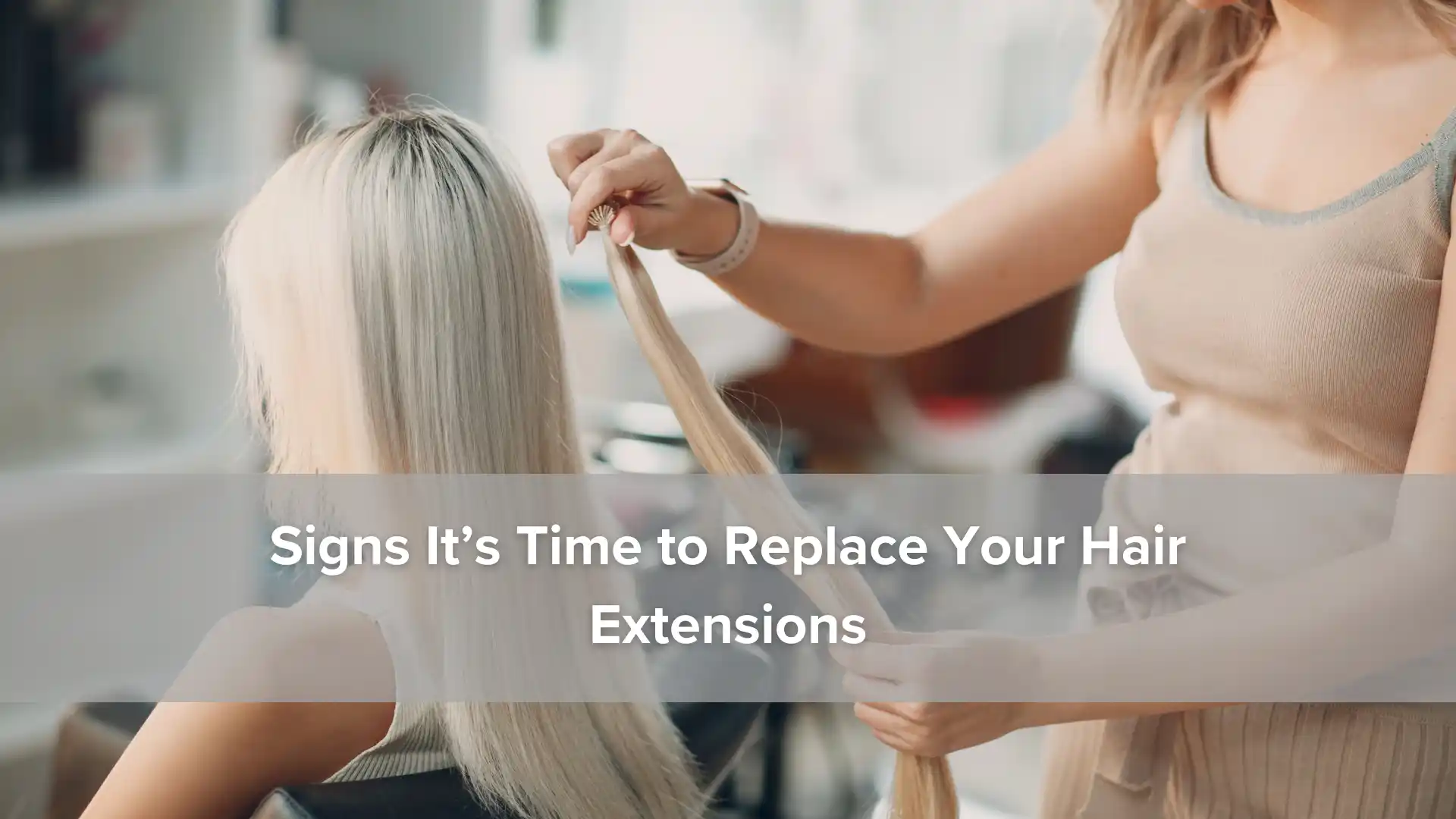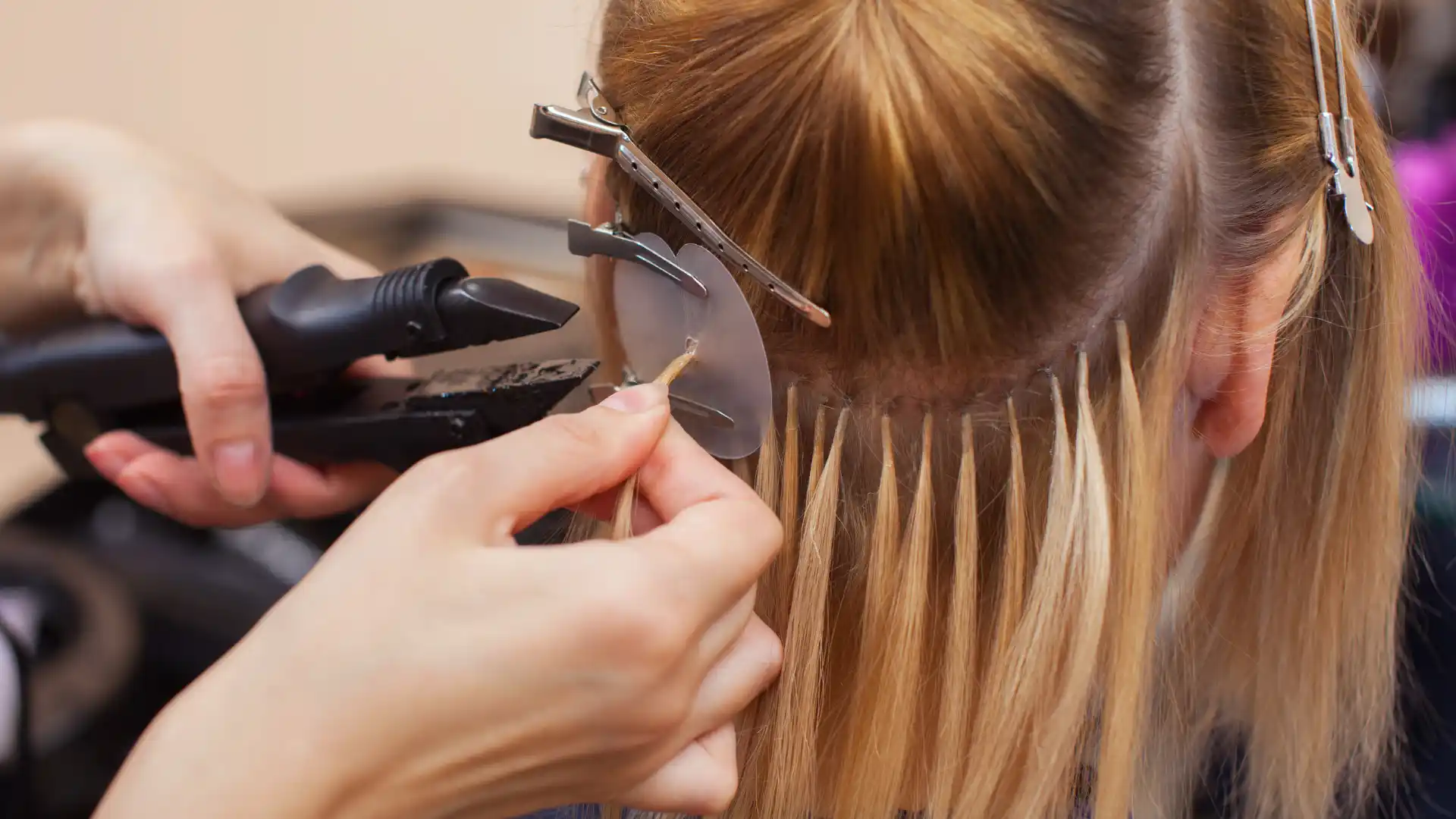Signs It’s Time to Replace Your Hair Extensions
Hair extensions can transform your hair, adding length and volume and boosting your confidence. However, like all beauty investments, they don’t last forever. Whether you’ve got tape-ins, clip-ins, or sew-ins, knowing when to replace your hair extensions is the key to keeping your hair looking fantastic. That begins with understanding how long different types of extensions typically last, how to tell when it’s time for replacement, and some tips for making the most of your investment.
How Long Do Different Hair Extensions Typically Last
The lifespan of your hair extensions depends on a few key factors, including the type of extension, your regular hair care routine, and how often you visit your stylist for hair extension maintenance. Here’s a breakdown based on extension type:
- Tape-In Extensions: These last around six to eight weeks before needing to be removed and re-taped. With proper care, the hair can be reused up to three times, providing a total lifespan of about four to six months.
- Clip-In Extensions: Clip-ins are not worn daily, which helps extend their lifespan. Typically, these extensions can last from six months to a year, possibly even longer if you take great care of them.
- Sew-In Weaves: These last around six to eight weeks before they need adjustment. If the hair is high quality, it can last up to a year with good care and regular extension reapplication.
- Keratin Bond/Fusion Extensions: Depending on quality of care and hair growth, fusion extensions can last anywhere from three to four months.
Signs It’s Time to Replace Hair Extensions
The estimated lifespans of extensions are a valuable rule of thumb, but it’s also essential to watch for signs that replacement or adjustment is necessary. Some of the most common signs to look for include the following:
Hair Matting and Tangling
Even the highest quality extensions will eventually dry out and become damaged. If your extensions are constantly tangling, especially near the bonds or at the nape of your neck, this is a telltale sign that they’re probably ready for retirement.
Excessive Shedding
Shedding and tangling are the two most obvious signs that your extensions are on their way out. When you find clumps of extension hair in your hairbrush, shower drain, or on your clothes, it means the structure of the extensions is worn out and breaking down. In time, you’ll notice the extensions thinning out and losing volume.
Visible Tape or Bonds
If you can spot the bonds or tape attachments without lifting the hair, it’s a clear sign that your extensions have grown out too far or slipped from their original position. This is not only an aesthetic issue, but too much strain can affect your natural roots as the weight distribution of your extensions shifts.
Itchiness or Scalp Discomfort
As your extensions grow, they can pull on your scalp, causing tension headaches, irritation, itchiness, and general discomfort. If your scalp feels tight, sore, or itchy even after washing it, your extensions likely need maintenance or replacement.
Loose or Slipping Extensions
Extension slippage can indicate that they are no longer secure, and you should see your stylist. This not only affects the appearance and feel of your hair, but it can also damage your natural hair by putting undue strain on it.
Tips to Extend the Life of Your Hair Extensions
While there is always a shelf life on extensions, diligent at-home care and regular salon maintenance can make a tremendous difference in the lifespan of your investment. If you want to make the most of your extensions, follow these tips:
- Brush Often (and Gently): Detangle your extensions daily by gently brushing with a wide-tooth comb or loop brush. Start from the bottom and work your way up to avoid unnecessary stress on the bonds.
- Prepare for Bed: Your extensions can easily tangle while you sleep if you’re not careful. To avoid this, tie your hair up in a low ponytail or loose braid, and consider using a satin or silk pillowcase for reduced friction.
- Use the Right Products: Your haircare products should protect both your natural hair health and the health of your extensions. That means sticking with sulfate-free, extension safe shampoos and conditioners.
- Don’t Overheat: Most high quality extensions are designed for use with heat tools, but you still shouldn’t overdo it. Excessive heat will dry out and damage your extensions prematurely.
- Schedule Regular Maintenance: Maximizing the lifespan of your extensions requires regular visits to your stylist. Schedule a touch-up extension appointment every six to eight weeks.
Schedule Your Extension Touch-Up with Therapy Hair Studio
The experts at Therapy Hair Studio can keep your extensions looking healthy, natural, and beautiful. If you notice any tangling and matting, scalp discomfort, or extension slippage, contact us today to schedule an appointment with our stylist.
Related Posts:






